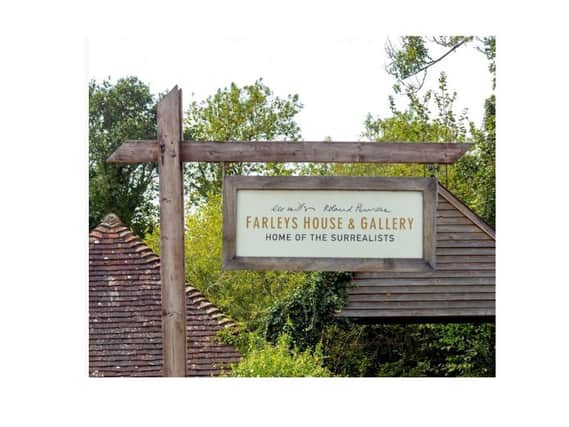Lee Miller: Fashion in Wartime Britain is reopening exhibition


Spokeswoman Carrie Rees said: “The exhibition will explore the under-recognised body of fashion photography made by the renowned surrealist photographer during the Second World War.
“It will feature over 60 of Miller’s images for British Vogue from 1939 to early 1944, many of which have never been seen before. The exhibition will be accompanied by a major new publication, featuring over 100 recently archived images.
Advertisement
Hide AdAdvertisement
Hide Ad“This important aspect of Lee Miller’s wartime work has previously been overshadowed by her role as a front-line correspondent in the final years of the war.
“New research, undertaken for the exhibition and book, on Miller’s wartime diaries has uncovered the sheer volume of editorial shoots for British Vouge that she worked on for most of the early 1940s.
“Despite paper rationing, British Vogue was kept in print throughout the war under the influential editorship of Audrey Withers and was seen as an opportunity by the British government to encourage women to join the war effort.
“Its pages were transformed into a guide for ‘soldiers without guns’ whilst continuing to advise on fashion and how to make the most of what was available in spite of clothes rationing which was introduced in 1941.”
Advertisement
Hide AdAdvertisement
Hide AdMiller’s fashion output was so prolific that in 1941, Audrey Withers described just how important Miller was to the publication: “She has borne the whole weight of our studio production through the most difficult period in Brogue’s (British Vogue’s) history.”
Carrie added: “Photographs on display will provide insight into the prevailing fashions of the day, from factory wear to evening gowns and suits by famed designers including Norman Hartnell, Digby Morton, Hardy Amies and Bianca Mosca, one of the few female fashion designers from the period.
“Despite the difficult wartime conditions, Lee used her surrealist eye and technical skills in the art direction of her photographs and often took models out of the studio to museums, a taxidermy shop and onto the streets. Most notably she photographed broadcaster Elizabeth Cowell, one of the first female television announcers, against a backdrop of bombed-out houses in London.”
In 1940 during the early days of the war Lee wrote to her parents, describing the immense difficulty of shooting during the Blitz and the team’s perserverance: “The studio never missed a day – bombed once and fired twice – working with the neighbouring buildings still smouldering – the horrid smell of wet charred wood – the stink of cordite – the fire hoses still up the stair cases and we had to wade bare foot to get in – little restaurants producing food on a primus stove – carrying water to flush toilets and whoever could, taking the prints and negs home to do at night if they had the sacred combination of gas, electricity and water.”
Advertisement
Hide AdAdvertisement
Hide AdThe exhibition will be accompanied by a lavishly illustrated coffee table book, featuring more than 100 photographs, published by Lee Miller Archives, with contributions from Robin Muir, Amber Butchart and introduction by Lee Miller’s granddaughter Ami Bouhassane, available through www.leemiller.co.uk: ISBN: 9780 9532389 8 9
The exhibition and book have been made possible with support from the DCMS Culture Recovery Fund awarded by the Arts Council England.
Farleys House & Garden is open every Thursday and Sunday, 10am-4.30pm. Tickets on www.farleyshouseandgallery.co.uk.